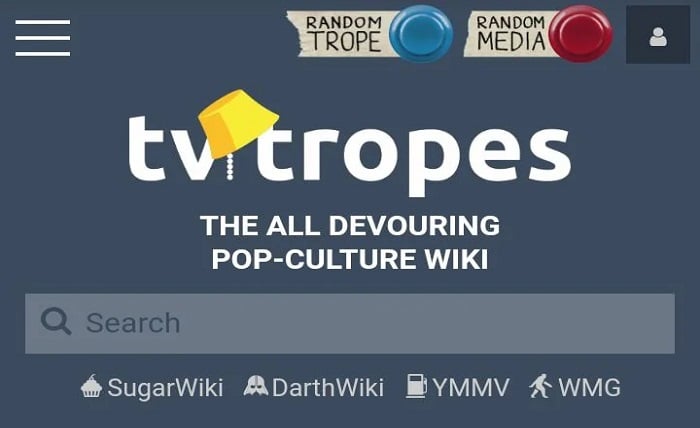TV Tropes: The Building Blocks of Storytelling

What Are TV Tropes?
TV tropes are recurring themes, character types, or plot devices that appear in television shows. They can range from well-known narrative structures like the “love triangle” to specific character archetypes such as the “reluctant hero” or “evil twin.” Tropes help shape the way stories are told, providing a shorthand that viewers can easily recognize and engage with. While some tropes are common across genres, others are more specific to certain types of shows, such as sitcoms, dramas, or science fiction.
The concept of tropes is not exclusive to TV. In fact, many of the tropes found in television shows have their roots in literature, theater, and film. Tropes in television are often borrowed from these other forms of storytelling, adapting them to fit the medium’s unique constraints and opportunities.
The Origins of TV Tropes
The idea of tropes in storytelling dates back centuries. Writers have long used common themes, character types, and plot devices to create stories that resonate with audiences. However, the modern concept of TV tropes as we know it emerged in the digital age. Websites like TVTropes.org, launched in 2004, helped popularize the term and provided a comprehensive database of common tropes found in TV shows, films, books, and other forms of media.
TVTropes.org quickly became a hub for fans and creators alike, offering a collaborative space where people could identify, analyze, and discuss the various tropes that appear in popular TV shows. The site features a vast array of tropes, categorized by type, genre, and show, allowing users to explore the underlying storytelling patterns that shape the media they consume.
Common TV Tropes in Popular Shows
One of the most fascinating aspects of TV tropes is how they can appear across different genres and settings. Here are a few examples of common TV tropes found in popular shows:
1. The Chosen One
A staple in fantasy and science fiction, the “chosen one” trope features a protagonist who is destined to fulfill a great prophecy or achieve a monumental task. Shows like Buffy the Vampire Slayer and Charmed feature characters who are chosen to battle evil forces, often facing great personal sacrifice along the way.
2. The Love Triangle
This trope appears in nearly every genre, from teen dramas to romantic comedies. It involves a situation where three characters are entangled in a romantic relationship, often creating tension and conflict. Shows like The Vampire Diaries and Twilight are famous for their love triangle dynamics, which keep viewers hooked as they wonder who the protagonist will choose.
3. The Evil Twin
The evil twin trope is common in soap operas and thrillers, where a character’s identical twin is the complete opposite in terms of morality and behavior. Shows like The Flash and The Parent Trap use this trope to create conflict, mistaken identity, and intrigue.
4. The Comic Relief
In nearly every TV show, there is a character whose main purpose is to lighten the mood with humor. Whether it’s the wisecracking sidekick or the bumbling fool, the comic relief trope is essential for balancing out more intense moments. Characters like The Office’s Michael Scott or Friends’ Chandler Bing exemplify this trope.
5. The Hero’s Journey
The hero’s journey is a timeless trope that dates back to ancient mythology. It involves a protagonist who embarks on a journey, faces trials and challenges, and returns home transformed. Shows like Arrow and Stranger Things often feature elements of the hero’s journey, with characters growing through adversity.
The Impact of TV Tropes on Storytelling
TV tropes play a significant role in shaping the storytelling process. For writers and creators, tropes provide a framework within which to build their narratives. By using established tropes, creators can tap into audience expectations, creating stories that feel familiar while still offering new twists and surprises.
However, tropes can also limit creativity if overused or relied upon too heavily. When a trope is used without innovation or subversion, it can feel predictable and uninspired. This is why many TV shows are praised for “playing with” or “subverting” common tropes, taking familiar concepts and turning them on their head to keep the audience engaged. For example, Breaking Bad subverts the trope of the “good guy turned bad” by showing the gradual moral descent of its protagonist, Walter White.
For audiences, tropes provide a way to connect with the material. When we see a familiar trope unfold in a new context, it evokes certain emotions and expectations. Whether we love or hate a trope, it helps us engage with the story on a deeper level. TV tropes also help us identify patterns in storytelling, allowing us to anticipate what might happen next and appreciate the ways in which a show plays with conventions.
How TV Tropes Are Subverted
While TV tropes are a crucial part of storytelling, they are not always used in their traditional form. Many creators enjoy subverting or deconstructing tropes to create fresh and unexpected narratives. Subverting a trope involves taking a well-known convention and twisting it in a way that surprises the audience.
For example, the “damsel in distress” trope, where a female character is helpless and must be rescued by a male hero, has been subverted in shows like Buffy the Vampire Slayer, where Buffy herself is the one doing the rescuing. Similarly, the “love triangle” trope has been subverted in shows like Fleabag, where the protagonist rejects traditional romantic conventions altogether.
Subverting tropes allows creators to challenge audience expectations and provide more nuanced and complex narratives. By flipping familiar tropes on their head, shows can keep viewers on their toes and make them think more critically about the media they consume.
TV Tropes in Other Media
TV tropes are not exclusive to television; they appear in all forms of storytelling, including film, literature, and video games. Many of the most famous tropes, such as the “reluctant hero” or “mentor-student relationship,” can be found in books, movies, and even video games.
For example, the “mentor” trope is a popular theme in many stories, from The Karate Kid to Star Wars, where a seasoned mentor helps guide the protagonist on their journey. Similarly, the “red herring” trope, which involves misleading the audience to distract them from the true culprit, is used in both TV shows and mystery novels.
The ubiquity of TV tropes across different media forms suggests that these storytelling conventions tap into fundamental aspects of human experience. Whether in a TV show or a video game, tropes help creators tell stories that resonate with audiences by drawing on shared cultural references and psychological triggers.
The Role of TV Tropes in Fan Communities
TV tropes have a significant presence in fan communities, where enthusiasts come together to analyze and discuss the tropes present in their favorite shows. Websites like TVTropes.org allow fans to contribute their own observations about recurring themes and plot devices, creating a collaborative space for people to explore the underlying mechanics of storytelling.
In many ways, TV tropes have become a form of shorthand for fans. When discussing a TV show, fans often reference specific tropes to explain why they enjoy (or dislike) certain elements. For example, a fan might say that a particular show is “playing with the chosen one trope,” meaning the protagonist’s journey is unique in some way that defies the traditional expectations of that trope.
This sense of community helps fans engage with the media they love on a deeper level. By recognizing and discussing tropes, fans can share their interpretations, critique the show’s use of tropes, and even predict where the story is headed.
Conclusion
TV tropes are an essential part of storytelling, shaping the way narratives unfold in television shows. By understanding and recognizing these recurring themes, both creators and audiences can engage more deeply with the stories being told. Whether it’s the “chosen one” trope or the “love triangle,” these familiar conventions provide a foundation for creators to build upon, allowing them to craft engaging and memorable TV shows. At the same time, TV tropes can also be subverted, providing opportunities for fresh, innovative storytelling that challenges audience expectations. As TV shows continue to evolve, the role of tropes will remain crucial in shaping the stories we love.
LearningPoint24 is your go-to online platform for mastering new skills and expanding knowledge. Offering a wide range of courses across various fields, from technology to business and personal development, LearningPoint24 caters to learners at every stage. Whether you’re looking to advance your career or explore a new hobby, LearningPoint24 provides expert-led courses, interactive tools, and a flexible learning environment. With affordable pricing and courses designed for real-world application, it’s the perfect place to unlock your potential and achieve your goals. Start your learning journey today with LearningPoint24 and take your skills to the next level!
FAQs
1. What is a TV trope? A TV trope is a recurring theme, character archetype, or plot device used in television shows to help tell a story.
2. Why are TV tropes important in storytelling? TV tropes provide a framework for creators to build upon, and they help audiences connect with the material by evoking familiar themes and expectations.
3. Can TV tropes be subverted? Yes, many TV shows subvert or deconstruct tropes to surprise the audience and provide more complex, innovative storytelling.
4. Where can I find TV tropes? Websites like TVTropes.org feature a comprehensive database of tropes found in TV shows, films, books, and other forms of media.
5. Do TV tropes only appear in TV shows? No, TV tropes appear in various forms of media, including films, books, and video games, as they are common storytelling conventions.




